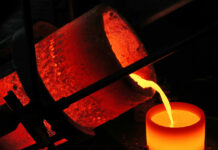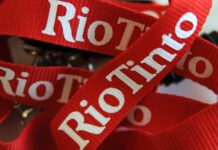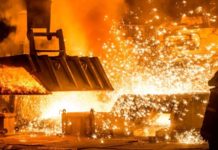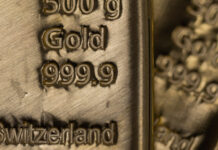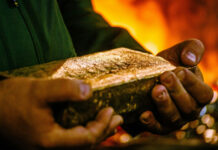
[miningmx.com] — HARMONY is again looking at plans to spin out its Evander division through a separate listing, following the surge in rand gold prices which, if sustained, will transform Evander’s fortunes.
But Harmony CEO Graham Briggs stressed management’s strategic aim was to develop Evander “using somebody else’s money’ and a possible listing was one of a number of options being assessed.
Interviewed during the Harmony investor day on Wednesday, Briggs said “our major shareholders want us to stay focused on our operations and projects in Papua New Guinea (PNG). They won’t support us on an expansion of Evander because of the South African investment issues.’
Briggs first raised the possibility of a separate listing for Evander in May last year but then dropped it in August.
At the time Briggs said “one of the critical issues, according to our advisers, was size. You need a company worth around R3bn and Evander was not going to get there.
“There were issues with the grade and the likely capital cost which rose to around R2.5bn which is much more than we thought it would be.’
Harmony subsequently sold off sections of Evander to unlisted junior Taung Gold for R300m and restructured the remaining operations to focus on the high-grade No 8 shaft.
That policy paid off handsomely in the June quarter, when Evander earned an operating profit of R88.6m through increasing gold production by 55% to 750kg, and dropping cash costs 31% to R205,235/kg.
Briggs pointed out the restructured Evander operation had been planned to operate on gold prices of between R280,000/kg and R300,000/kg. The gold price had surged as high as R430,000/kg at times during the last week.
“The last time we looked at listing Evander we had our backs to the wall because there was simply no cash,” said Briggs. “At current gold prices the mine would generate internally most of the funds needed to pay for the expansion programmes.”
The sharply higher gold prices – if sustained – would also have a major beneficial impact on the development of the Wafi-Golpu gold/copper project in PNG.
The project is owned 50/50 by Harmony and joint venture partner Newcrest and the current capital cost is estimated at $3bn. One concern frequently voiced by analysts and fund managers is over how Harmony would fund its $1.5bn share of that cost.
Briggs put up graphs showing that, at a sustained gold price of R350,000/kg, Harmony would be able to fund its share of the capital internally without the need to raise funds.
Financial director Hannes Meyer told the presentation that, despite the obvious potential to fund the project internally, Harmony was still likely to put in place a debt facility of between $750m and $1bn “so as to have financial flexibility’.
The Harmony share price was knocked back last week after investors reacted negatively to news from PNG, implying political changes there threatened potential nationalization of the country’s mining industry.
Briggs criticised the poor reporting of what was actually happening in PNG and highlighted the double standards applied by investors in valuing Harmony versus partner Newcrest, which is far more exposed to PNG. Newcrest’s operating Lihir mine is located there.
Harmony shares plunged nearly 12% to around R87 from where they have recovered to current levels around R90. Newcrest shares dipped about 5% to A$39 from just under A$41 before almost immediately bouncing back to their previous levels.
“I do not believe next year’s elections in PNG will cause any disruptions to our plans for Wafi-Golpu,” said Briggs. “The government, the provincial government and the landowners all want this project to go ahead.
“The PNG government does not intend nationalisation yet some people have taken this all the way to the Doomsday scenario.
“The PNG government has always had the right to take a stake of up to 30% in Wafi-Golpu but that is not a “free carry’. They would have to pay their share of the development costs incurred so far and then contribute their share of the future development costs.’
Briggs also pointed out that, in terms of market capitalisation, investors had valued Newcrest’s half of Wafi-Golpu at between $3.5bn and $4bn, while Harmony’s half of the project had been valued at between $1.5bn and $2bn.
He agreed with comments made by JP Morgan Cazenove analyst Steve Shepherd from the floor that Harmony’s shares were hugely undervalued in relation to current gold prices.
“I am not happy with the current valuation of Harmony,” said Briggs. “A lot of investors still clearly hold the view that Harmony is a high-cost, low-grade, marginal operator that is very South African focused.
“That’s not where we are taking the company and our operations are distinctly different to those of just a few years ago since when we have closed down ten loss-making shafts.
“We have been talking to investors about our new strategy but it has not shown up in the share price.’
– The writer owns shares in Harmony


